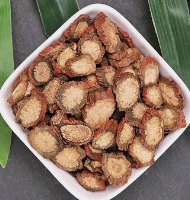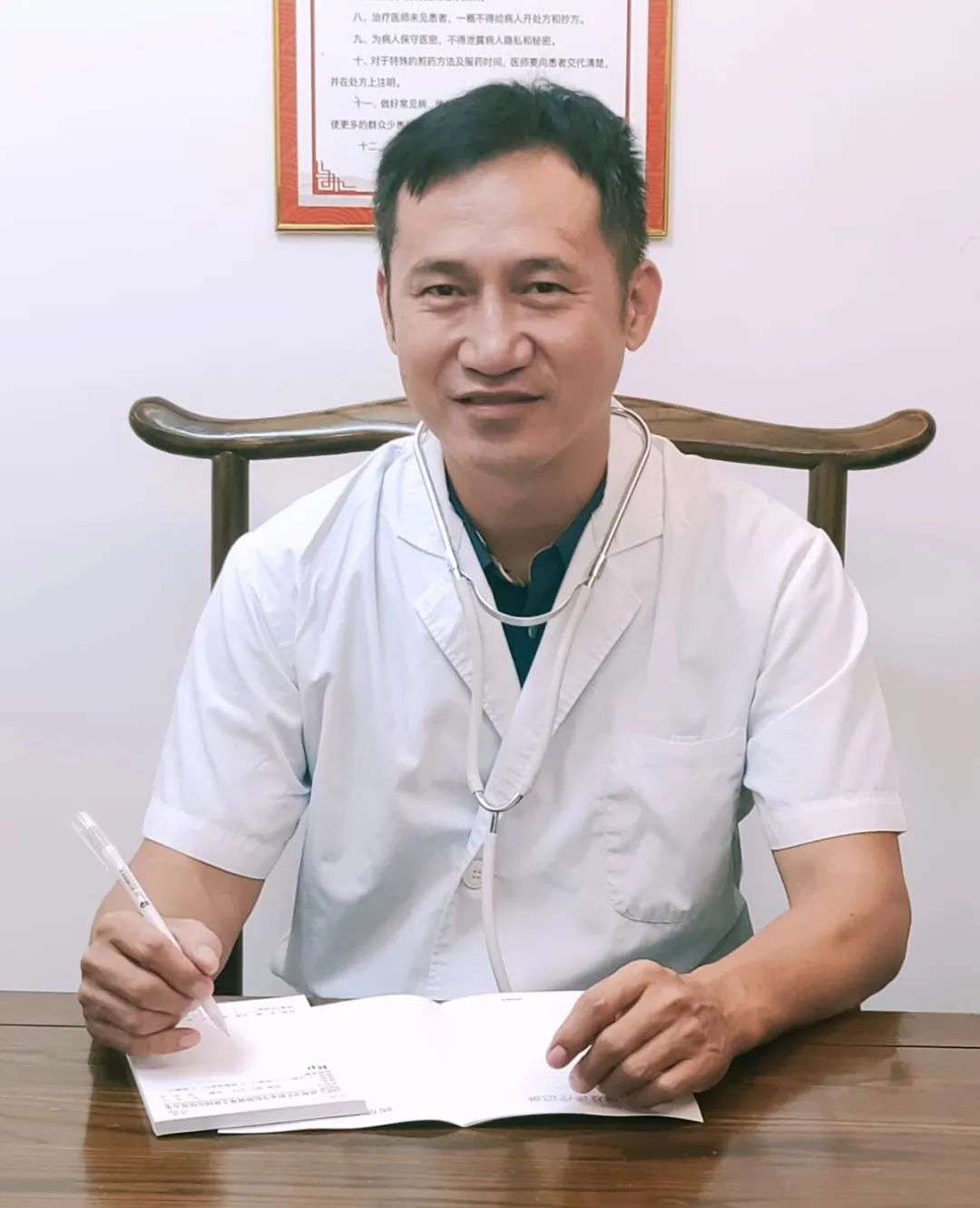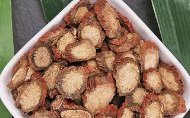The root of Dan Shen (Salvia miltiorrhiza) contains furan and phenolic compounds such as Danshenone I, Danshenone II A, Danshenone II, Yindan, Isodanshenone I, Isodanshenone II, and Danshenone. It can also isolate Danshenol I and Danshenol II. Additionally, it contains vitamin E, which is comparable in efficacy to malt.

Pharmacological Effects
(1) Antibacterial effects: Ethanol extracts at a dilution of 1:100,000 have an inhibitory effect on Mycobacterium tuberculosis and show therapeutic effects on experimental tuberculosis in mice, but are ineffective in guinea pigs.
(2) Effects on the cardiovascular system: Decoctions have an inhibitory effect on isolated and in vivo toad hearts, causing atrioventricular conduction block. Intravenous injection of Dan Shen and compound Dan Shen injection can lower blood pressure in anesthetized cats and rabbits. Decoctions also exhibit hypotensive effects in rabbits and dogs, and have vasodilatory effects in toads and isolated rabbit ear experiments.
(3) Sedative effects: Dan Shen or compound Dan Shen injection shows significant sedative effects in white mice and can prolong the sleep time induced by cyclohexyl barbiturate.
(4) Effects on lipid metabolism: Dan Shen preparations can lower cholesterol levels in some cases.
(5) Blood sugar lowering effects: Dan Shen decoction has a blood sugar lowering effect when injected into rabbits, lasting up to 5 hours.
Traditional Uses
(1) Invigorating blood and relieving pain: Used for menstrual irregularities, dysmenorrhea, chest and abdominal stabbing pain, heat bi pain, epilepsy, angina pectoris.
(2) Detoxifying and stopping bleeding: Used for mastitis, acute and chronic hepatitis, burns, abscesses, hemoptysis, uterine bleeding, and rectal bleeding.
Dosage and Administration: Oral: Decoction, 4.5–9 g; or in pills or powders. External use: Decoction for topical application or for fumigation.
Contraindications: Use with caution in those without blood stasis.
Applications of Single Herbs
(1) Nephrotic syndrome: A study on 33 cases of nephrotic syndrome used compound Dan Shen injection 16 ml combined with 500 ml of 10% glucose injection for intravenous drip once daily, along with prednisone (prednisolone) 10 mg three times daily; the control group of 33 cases received only prednisone. Treatment lasted for 20 days. Results (treatment group/control group): complete remission in 23 cases vs. 7 cases, partial remission in 8 cases vs. 10 cases, with a total remission rate of 94% vs. 54.8% (P<0.005).
(2) Hemorrhoids at various stages: Using 2 ml of compound Dan Shen injection, apply alternating pressure on the line connecting the Shenmen (Shenmen) and Taiyuan (Taiyuan) points on both upper limbs until discoloration (white or dark red) or slight indentation is observed, indicating the acupuncture point for hemorrhoids. Use a 5 ml syringe with a No. 5 needle to draw up 2 ml of compound Dan Shen injection, disinfect as usual, and insert the needle into the hemorrhoid point to the muscle layer, slightly twisting until a sensation of soreness and numbness is felt, then slowly inject 1 ml of the drug per point once daily for 5 sessions as one treatment course. A total of 120 cases of hemorrhoids were treated, with 100 cases cured, resulting in a cure rate of 83.3%.
(3) Whooping cough encephalopathy: Daily administration of 1–2 vials (each containing 2 ml, with 2 g of Dan Shen) of Dan Shen injection added to 250–500 ml of 5% glucose solution for intravenous drip for about one week. Additionally, appropriate qi-invigorating herbs such as Astragalus (Huang Qi) and Codonopsis (Dang Shen) can be used to enhance blood-activating and stasis-resolving effects. For cases with cerebral edema, appropriate treatment should be provided, and attention should be paid to correcting water and electrolyte imbalances, as well as enhancing nutrition and care. Treatment results: 28 cases treated, with 27 cases cured and 1 case with residual aphasia. No deaths were reported.
(4) Glaucoma: Jiang Youqin et al. treated 94 patients with mid to late-stage glaucoma (116 eyes) using Dan Shen injection, observing significant efficacy. Vision improvement was noted in 58 eyes (50%), with 27 eyes (23.3%) showing improvement of two lines or more. Administration: Dan Shen injection, 2 ml intramuscularly daily, with a treatment course of 30 days.
(5) Pediatric bronchial asthma: Xu Dejin et al. treated 40 cases of pediatric bronchial asthma with Dan Shen tablets, while the control group received oral Ketotifen. The results showed 2 cases cured, 14 cases significantly effective, 21 cases effective, and 3 cases ineffective in the Dan Shen group, with a total effective rate of 92.5%. Administration: Oral Dan Shen tablets (each tablet contains 1 g of raw herb), 2–3 tablets per dose, taken three times daily for 6 months, with follow-ups once or twice a month.
(6) Sensorineural hearing loss: Reports indicate that Hu Yuanxiang et al. treated 100 patients with sensorineural hearing loss using Dan Shen injection, with 28 cases cured, 45 cases improved, and 27 cases ineffective, resulting in a total effective rate of 73%. Treatment method: 20–30 ml of Dan Shen injection added to 500 ml of 5% glucose solution for intravenous drip once daily for 2 weeks, with a 3-day interval between treatment courses.
(7) Erectile dysfunction: Using 4 ml of compound Dan Shen injection, acupuncture at each point with 1 ml, every other day; three groups of acupuncture points were used alternately. Acupuncture points: 1) Guizhong (to muscle layer), Sanyinjiao (both sides); 2) Yaoyangguan, Zusanli (both sides); 3) Changqiang (2 ml injection) and Shenshu (both sides). A total of 10 sessions constituted one treatment course. Avoid sexual activity, alcohol, and mental stress. Three treatment courses were administered. Treatment results: 768 cases treated, with 633 cases cured, 127 cases improved, and 8 cases ineffective, resulting in a total effective rate of 98.96%.
(8) Lumbar disc herniation: Traction was initiated 2 weeks prior, using 8 ml of Dan Shen injection combined with 250 ml of 20% Angelica (Dang Gui) injection for intravenous drip once daily. During traction, the patient lies supine with feet elevated 10–15 cm, securing the axillary traction belt to the head of the bed, and the pelvic traction belt around the waist, with traction weight set to one-third of body weight. Each session lasts 1–2 hours, performed 2–3 times daily for 3 weeks. Results: Among 22 cases, 9 cases were cured, 7 cases significantly effective, 5 cases effective, and 1 case ineffective, with a total effective rate of 95.46%.
(9) Ménière’s disease: Using 10–30 ml of compound Dan Shen injection; β-sitosterol 0.1–0.4 mg/kg, and Troxerutin (We Brain Road) 0.4 g, all added to 250 ml of liquid for intravenous drip once daily for 6 days. If symptoms are severe, 25–50 mg of Isopropamide can be injected intramuscularly once. Results: Among 40 cases, 37 cases were cured, 3 cases improved, with a total effective rate of 100%.
(10) Common acne: Treatment group of 162 cases. Acupuncture points included Quchi, Hegu, Zusanli, and Feishu (all bilateral). Using compound Dan Shen injection (each vial 2 ml, containing 2 g of Dan Shen and Sandalwood), acupuncture at each point with 2–3 ml, once daily. The control group of 146 cases received Metronidazole 200 mg and Vitamin B6 20 mg, taken orally three times daily. Each treatment course lasted 10 days. Results: The treatment group had 104 cases cured, 19 cases significantly effective, 31 cases effective, and 8 cases ineffective, while the control group had 47 cases cured, 19 cases significantly effective, 34 cases effective, and 46 cases ineffective, with total effective rates of 95% and 68.5% (P<0.01).
(11) Promoting healing of ulnar and radial fractures: Treatment group of 52 cases, acupuncture points included Zusanli and Xuanzhong. Using Dan Shen injection (provided by Zhengda Qinchunbao Pharmaceutical Co.), acupuncture at each point with 2 ml, once daily; alternating sides for acupuncture points. Additionally, oral administration of blood-activating and stasis-resolving herbal medicine was given, with one dose daily, decocted and divided into three doses. The control group of 49 cases had fractures fixed with long-arm plaster for 2–4 weeks for transverse and oblique fractures, and 4–6 weeks for comminuted fractures. Results: The treatment group had 32 cases with excellent outcomes, while the control group had 20 cases; good outcomes were 15 cases in the treatment group and 7 cases in the control group, with a total effective rate of 100% and 85.7% (P<0.01).
(12) Insomnia: Treatment group of 50 cases, acupuncture points included 1) Shenmen, Anmian, Xinshu, and Ge Shu; 2) Neiguan, Sanyinjiao, Gan Shu, and Pi Shu; all bilateral. Using 8 ml of Dan Shen injection, acupuncture at each point with 1 ml, once before sleep each night; alternating acupuncture points between groups. The control group of 50 cases received three slices of Acanthopanax (Wu Jia Pi) orally twice daily. Each treatment course lasted 10 days with a 2-day interval. Two treatment courses were administered. Results: The treatment group had 41 cases cured, 3 cases significantly effective, 3 cases effective, and 3 cases ineffective, while the control group had 28 cases cured, 6 cases significantly effective, 4 cases effective, and 12 cases ineffective, with total effective rates of 94% and 76% (P<0.01).
(13) Avascular necrosis of the femoral head: Treatment group of 32 cases, acupuncture points included Huantiao and Juluo (both on the affected side). Using Dan Shen injection (freeze-dried, produced by Harbin Pharmaceutical Group), combined with 5 ml of normal saline, acupuncture at each point with 2.5 ml, three times a week for 6 months. The control group of 30 cases underwent core decompression surgery. Results: The treatment group had 4 cases improved, while the control group had 28 cases stable, 18 cases improved, and 8 cases worsened.
(14) Acute pyelonephritis: Treatment group of 30 cases received 0.8 g of Dan Shen powder for intravenous drip once daily. The control group of 30 cases received quinolone (or cephalosporin) antibiotics; urine bacterial culture was negative, and antibiotics were selected based on sensitivity tests; each treatment course lasted 2 weeks. Results: The treatment group had 20 cases cured, 8 cases improved, and 2 cases ineffective, while the control group had 13 cases cured, 8 cases improved, and 9 cases ineffective, with total effective rates of 93.3% and 70%.
(15) Pulmonary infections in AIDS patients: Treatment group of 20 cases received 20 ml of Dan Shen injection combined with 5% glucose solution for intravenous drip once daily. The control group of 16 cases received compound sulfamethoxazole 25 mg/kg, taken orally four times daily for 21 days. Clindamycin 1.2–2.4 g was administered via intravenous drip. Prednisone 40 mg was given; after 5 days, it was reduced to 20 mg, taken orally twice daily; after another 5 days, it was further reduced to 20 mg, taken once daily until the infection was controlled. Results: The treatment group had 17 cases cured, 1 case significantly effective, 1 case improved, and 1 case death, while the control group had 12 cases cured, 1 case significantly effective, 1 case improved, and 2 cases death.
(16) Traumatic hyphema: Treatment group of 38 cases received 0.8 g of Dan Shen powder (children’s dosage halved), combined with 250 ml of 5% glucose solution and 250 ml of 20% mannitol, with children receiving 1–2 g/kg; intravenous drip once daily, with mannitol completed within 30 minutes. The control group of 35 cases received 2 g of 6-aminohexanoic acid, 0.2 g of aminocaproic acid, and 10 mg of Vitamin K1, combined with 250 ml of 5% glucose solution for intravenous drip twice daily; both groups were in a semi-reclined position, with both eyes bandaged, pupils not dilated or constricted, and oral sedatives administered. For cases with anterior chamber inflammation, corticosteroids (or non-steroidal anti-inflammatory drugs) were used, and for high intraocular pressure, oral acetazolamide was administered. If hyphema persists and does not absorb, and intraocular pressure cannot be controlled, and drug treatment fails, anterior chamber puncture and irrigation treatment should be performed. Results: The treatment group had 18 cases cured, 9 cases improved, 8 cases effective, and 3 cases ineffective, while the control group had 8 cases cured, 7 cases improved, 11 cases effective, and 9 cases ineffective.
(17) Gastric ulcer: Treatment group of 34 cases received 250 ml of Dan Shen injection for intravenous drip once daily. The control group of 36 cases received 20 mg of Omeprazole, 1 g of Amoxicillin, and 0.5 g of Clarithromycin, taken orally twice daily for 7 days. Results: The treatment group had 21 cases cured, 12 cases effective, and 1 case ineffective, while the control group had 12 cases cured, 15 cases effective, and 9 cases ineffective, with total effective rates of 97.06% and 75.00% (P<0.05).
(18) Primary hyperlipidemia combined with atherosclerosis: Each group had 40 cases. The treatment group used modified Dan Shen decoction (with 20 g of Dan Shen, 6 g each of Sandalwood, Chuanxiong, Safflower, and Angelica, 10 g of Red Peony, and 12 g of Rehmannia). One dose daily, taken in two portions with warm water. The control group used 2 tablets of lipid-lowering tablets, taken twice daily after meals. Treatment lasted for 8 weeks. Results: The treatment group had 14 cases clinically controlled, 21 cases significantly effective, and 4 cases effective, while the control group had 11 cases clinically controlled, 23 cases significantly effective, and 5 cases ineffective.
(19) Scars (for patients with surgical or traumatic scars): Take 20 g of Dan Shen, grind into powder, and 15 g of ginger, mash into paste, mix with honey to form a paste. Apply to the scar area; gently massage for 10 minutes, twice daily for one month. Results: Among 32 patients, 21 cases were cured (with normal local skin color and no protrusion), 7 cases improved (with normal local skin color and scar atrophy), and 4 cases ineffective (with normal local skin color and no improvement in scars), resulting in a total effective rate of 87.5%.
Source: A Single Herb to Cure Stubborn Diseases, Chief Editor: Li Shiwen, Kang Manzhen



Traditional Chinese Medicine Acupuncture and Massage Department: Xie Yibing

★ Associate Professor
★ Associate Chief Physician
Profile
Graduated from Fujian University of Traditional Chinese Medicine in 1990, with over 30 years of clinical experience.
Specialties
1. Traditional Chinese Medicine for Rhinitis and Chronic Cough: Utilizing rhinitis ointment and floating needle therapy to comprehensively treat various acute and chronic rhinitis, allergic rhinitis, sinusitis, tonsillitis, adenoid hypertrophy, chronic cough, and asthma. Also treats recurrent colds, chronic pharyngitis, tonsillitis, snoring, frequent blinking, and otitis media.
2. Traditional Chinese Medicine for Yang Invigoration Acupuncture and Qi Guidance: Various constitution adjustments, such as treating women with Yang deficiency, cold uterus, cold limbs, menstrual pain, headaches, and infertility; treating qi and blood deficiency, mental fatigue, easy fatigue, and chronic illnesses. Also for reducing body fat and lowering blood pressure: treating abdominal obesity, primary hypertension (grades 1 and 2), hyperlipidemia, gout, and allergic urticaria, eczema, neurodermatitis, and acne.
3. Traditional Chinese Medicine Pain Specialty: Utilizing rapid effect muscle relaxation and pain relief techniques, floating needle therapy, etc., to treat various acute and chronic soft tissue injuries, degenerative changes causing pain, arthritis, spinal diseases, and related visceral dysfunctions. Specializes in treating cervical spondylosis, vertigo, lumbar disc herniation, lumbar muscle strain, and chronic gastrointestinal pain.
4. Traditional Chinese Pediatric Massage: Treating common pediatric conditions such as colds, coughs, poor appetite, food stagnation, enuresis, diarrhea, and torticollis.

【Disclaimer】The images and text are sourced from the internet or books, and the copyright belongs to the original authors. If there is any infringement, please contact us for removal!
Warm Reminder: This platform shares health-related images and information for reference and learning purposes only and does not serve as a basis for medical diagnosis. Please use under the guidance of a physician if needed.

